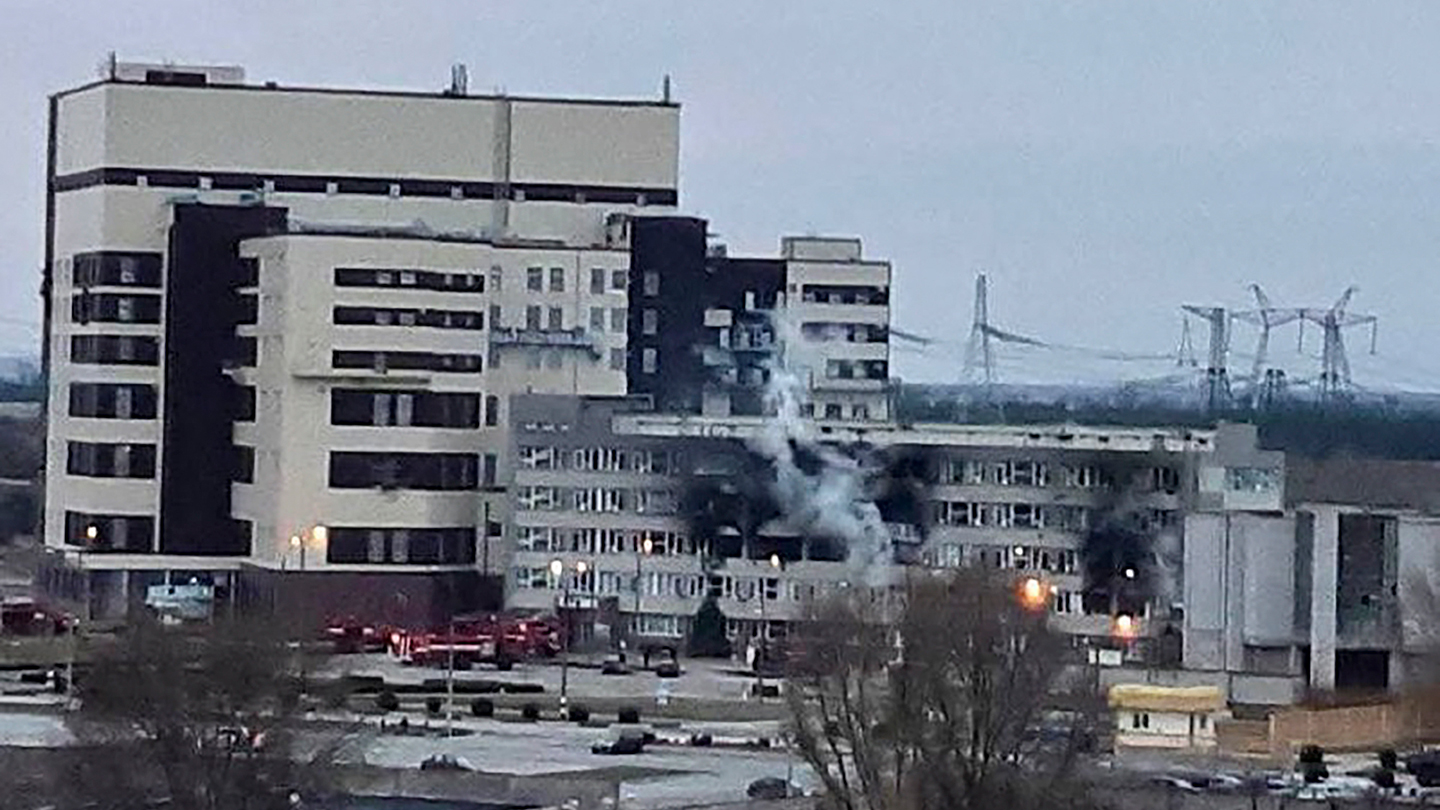Russia’s war in Ukraine raises nuclear risks, physicists warn
Russia’s war with Ukraine is heightening nuclear fears on two fronts. Attacks o

Russia’s war with Ukraine is heightening nuclear fears on two fronts. Attacks on nuclear facilities have raised concerns about accidents, and threats from Russian President Vladimir Putin have amped up worries over the potential for nuclear warfare.
Physicists historically have played a role in creating these technologies, and in keeping humankind safe from the dangers posed by them. Here’s what two key physicists have to say about the nuclear issues raised by the war in Ukraine.
Nuclear power
On March 4, Russian forces shelled Ukraine’s Zaporizhzhya nuclear power plant, causing a fire in one of the site’s buildings. The largest nuclear plant in Europe, it normally provides more than 20 percent of Ukraine’s power. Radiation levels have remained normal, according to the State Nuclear Regulatory Inspectorate of Ukraine. But the danger to Ukraine’s nuclear power plants is not over, Edwin Lyman of the Union of Concerned Scientists said in a March 4 news briefing.
“These plants are now in a situation that few people ever seriously contemplated when they were originally built, and that is the potential that they would be in the middle of a war zone,” said Lyman, a physicist by training. “No nuclear plant has been designed to withstand the potential threat of a full-scale military attack, and the plants in Ukraine are no exception.”
Nuclear zones
Ukraine has four active nuclear power plants — Zaporizhzhya, Rivno, Khmelnitsky and South Ukraine — and an additional nuclear facility at Chernobyl, the site of a 1986 accident that contaminated the area.
Location of Ukraine’s nuclear power sites
The Zaporizhzhya plant in southern Ukraine is now under Russian control. Ukraine informed the International Atomic Energy Agency that Russian forces are requiring approval for any actions taken by the plant management, the agency reported in a March 6 statement. Additionally, Russian forces have cut off internet access and certain other connections with the outside world, making communication with the site’s operators difficult, the statement said.
If workers’ access to the site is restricted, that could jeopardize the safety of the plant in various ways, Lyman warned. “It’s important to recognize that even if a nuclear reactor is shut down … that core still requires cooling to prevent dangerous overheating of the fuel that could lead to fuel damage and potential radiological release.”
To ensure safety, workers must be able to apply any emergency measures needed to maintain cooling. In 2011, in the aftermath of an earthquake and tsunami, reactors at the Fukushima Daiichi nuclear power plant in Japan endured explosions, melting of reactor cores and the release of radioactive material when a loss of power prevented workers from maintaining cooling (SN: 3/14/11).
What’s more, if the Zaporizhzhya plant’s operators are not allowed to freely come and go, “the personnel on-site might not have the opportunity to be relieved of their duties and this could lead, obviously, to fatigue compounded by the stress of working under duress,” Lyman said. Under such conditions, operators might be more likely to make mistakes, creating a situation ripe for dangerous nuclear accidents.
While it’s not clear exactly what Russia’s “special combat readiness” means in practice, von Hippel says that the country could ready additional weapons — for example by getting bombers loaded up at the end of runways. But the hair-trigger capacity for widespread nuclear destruction is already present.
Still, nuclear provocations like Putin’s matter, von Hippel says. “It does increase the danger of accidental nuclear war.” If an early-warning system misidentifies a nuclear attack, responders could initiate nuclear annihilation based on a misunderstanding. And in light of Russia’s heightened nuclear status, the response in the United States to a warning might be less skeptical. “The ground might already have been prepared psychologically … to expect that this is actually the real thing.”
In the 1980s, when nuclear arsenals were at their peak, the United States and the former Soviet Union together had about 70,000 warheads. Now, the entire world’s cache is closer to 10,000. But the numbers have stopped going down, says von Hippel, “and 10,000 is still enough to destroy civilization and cause billions of deaths.”
With the help of the American Physical Society, von Hippel and others formed the Physicists Coalition for Nuclear Threat Reduction, a group that includes around 650 physicists. The researchers lobby the U.S. Congress for changes in nuclear policy, for example, arguing for a “no-first-use” policy that would declare that U.S. nuclear weapons would be used only in response to another nuclear attack.
“The nuclear weapons era has just gone on too long,” von Hippel says. “We’ve been very lucky that there hasn’t been a nuclear war, but we can’t keep depending on luck given the consequences of all the destructive power that we’ve built up.”




